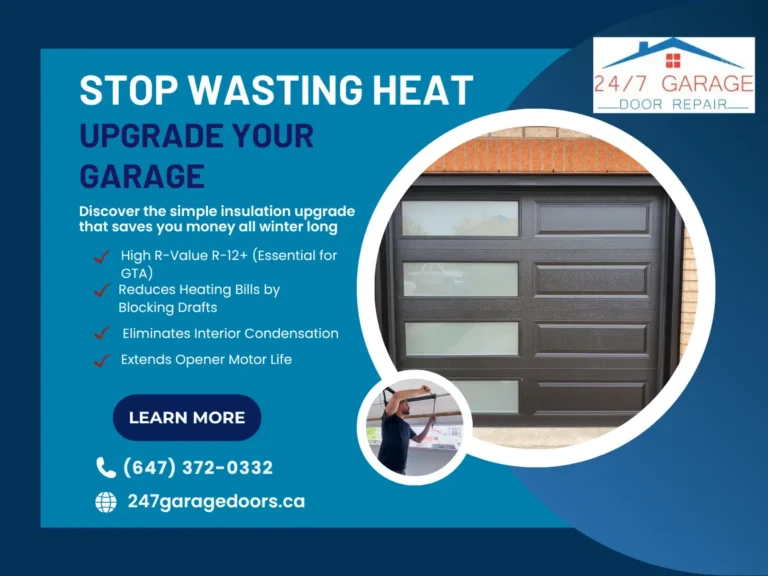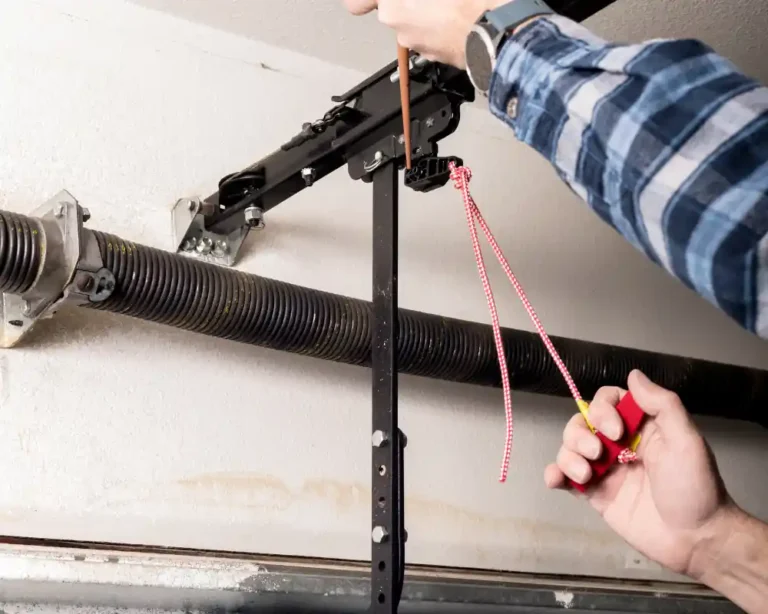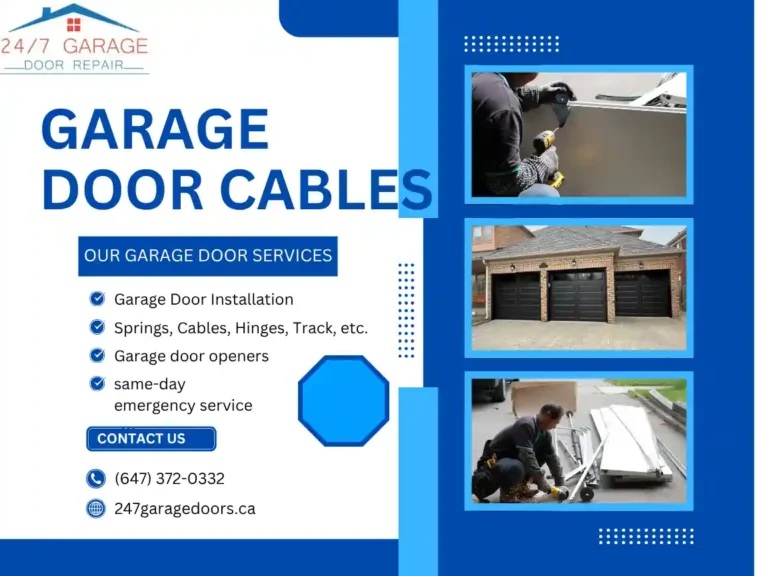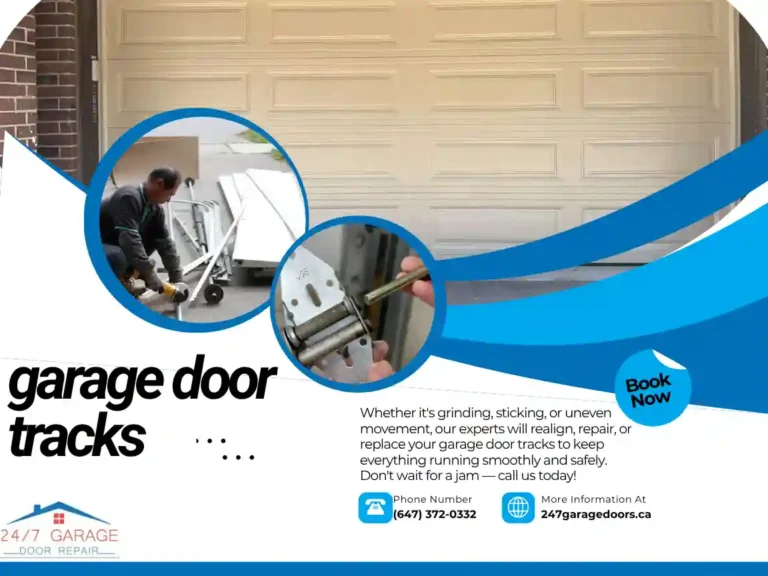Masterlift garage door openers are known for their convenience, safety, and reliable performance. Whether you’re upgrading an old unit or installing a new one, understanding the options will help you choose the best model for your needs. In this guide, we explore the four main types of Masterlift garage door openers (chain-drive, belt-drive, screw-drive, and wall-mount), key features like safety sensors, smart connectivity, and battery backup, and whether to opt for professional or DIY installation. We also include troubleshooting tips for common problems and maintenance advice tailored for Ontario homeowners.
Types of Masterlift Garage Door Openers
Masterlift offers several types of garage door openers, each with its own mechanism and benefits. The right choice depends on your priorities (noise, power, cost, etc.). Here are the four main types:
| Opener Type | Noise Level | Cost (CAD) | Maintenance | Ideal Use |
|---|---|---|---|---|
| Chain-Drive | Moderate | $150-$300 | Regular | Detached garages |
| Belt-Drive | Quiet | $200-$450 | Low | Attached garages |
| Screw-Drive | Moderate | $200-$400 | Minimal | Harsh climates |
| Wall-Mount | Very Quiet | $400-$700+ | Minimal | Limited overhead clearance |
Chain-Drive Openers
Chain-drive Masterlift garage door openers use a metal chain to lift and lower the door. They are very durable and can handle heavy garage doors, and they’re typically the most affordable option. The main drawback is noise: the moving chain can cause loud operation and vibrations, which can be an issue if a living space is above the garage. Regular lubrication of the chain and gears helps reduce noise and wear. Overall, chain-drive openers are a great choice if you prioritize strength and value over ultra-quiet operation.
Belt-Drive Openers
Belt-drive Masterlift garage door openers use a reinforced rubber belt instead of a chain. This significantly cuts down on noise and provides smoother operation. A belt-drive opener is an excellent choice for attached garages or if you have bedrooms near the garage, since it operates quietly. These models need minimal maintenance (no metal chain to lubricate) and are very reliable. Belt-drive openers usually cost a bit more than chain drives, but many homeowners find the quieter performance well worth the slightly higher price.
Screw-Drive Openers
Screw-drive Masterlift garage door openers use a threaded steel rod to move the door. They have fewer moving parts than chain or belt models, meaning there’s less to maintain. However, screw-drive systems can be sensitive to temperature changes. In very cold or hot weather, the screw mechanism’s lubricant can stiffen or thin out, affecting performance. In Ontario’s climate, a screw-drive opener might require seasonal adjustments or special low-temperature lubricants to run smoothly. Noise-wise, screw-drive openers are a middle ground – usually quieter than chain drives but a bit louder than belt drives.
Wall-Mount (Jackshaft) Openers
Wall-mount Masterlift garage door openers (also known as jackshaft openers) attach to the wall beside the garage door and turn the torsion bar directly. This setup frees up ceiling space (no overhead rail) and offers very quiet operation since there’s no long chain or belt mechanism. Wall-mount openers are great for garages with low headroom or for those who want a clean look and extra storage space overhead. Keep in mind they typically cost more than standard ceiling-mounted openers and require a torsion spring system on the door. Homeowners appreciate the sleek design and minimal noise of jackshaft Masterlift garage door openers, especially for garages next to living areas.


Key Features of Masterlift Openers
Modern Masterlift garage door opener models come with features that enhance safety and convenience.
Safety Sensors and Auto-Reverse
All Masterlift garage door openers include safety sensors at the base of the door frame. These infrared “photo-eye” sensors detect if a person, pet, or object crosses the door’s path while it’s closing and will immediately stop and reverse the door if something is detected. (Safety sensors have been mandatory on garage door openers since 1993.)
If your door ever refuses to close and the Masterlift opener’s light blinks (for example, it flashes 10 times), it usually indicates a sensor issue – they may be blocked or misaligned. Keeping the sensor lenses clean and aligned is important for safe operation. Also periodically test the auto-reverse feature with a piece of wood under the door to ensure the door reverses on contact (experts recommend doing this test monthly).
Smart Connectivity
Many Masterlift garage door openers offer smart connectivity, allowing you to control and monitor your garage door through a smartphone app. With built-in Wi-Fi, you can check if your garage door is open or closed from anywhere and open or close it remotely. You can also receive alerts if the door is left open, and some models let you set schedules (like auto-closing the door at night). Smart integration often ties into voice assistants or smart home systems as well. This feature provides peace of mind – for example, you can confirm the door is closed when you’re at work, or open it for a delivery when you’re not home.
Battery Backup
A battery backup is a very useful feature that keeps your Masterlift garage door opener working during a power outage. If the power goes out, the opener automatically switches to battery power so you can still operate the garage door. Most battery backup systems provide around 20 cycles (openings and closings) on a full charge, which is usually enough to get through a short-term outage. This means you won’t be stuck outside (or inside) during a storm or blackout. The battery recharges when power is restored, and the opener typically gives a warning (a beep or indicator light) if the battery is low. Backup batteries generally last 3-5 years before needing replacement to ensure reliable operation.
Installation: Professional vs. DIY
Installing a Masterlift garage door opener can be done by a professional or as a DIY project.
Consider your options carefully:
| Installation Type | Advantages | Disadvantages |
| Professional | Correct setup, preserves warranty, safe | Higher upfront cost |
| DIY | Saves cost, flexible schedule | Risk of misalignment, voids warranty |
Professional Installation
- Expert setup: A professional ensures your Masterlift garage door opener is mounted correctly, aligned, and all safety features are set up properly. This expert installation prevents problems and may keep your warranty intact.
- Time-saving (with a cost): An experienced installer can have your garage door opener working in a few hours, saving you time and hassle. The main downside is the added cost – professional installation in Ontario can add a couple of hundred dollars, and you’ll need to schedule a convenient time.
DIY Installation
- Cost savings & flexibility: Doing it yourself saves the installation fee and you can work at your own pace. Masterlift garage door opener kits include instructions, and many people with basic tools and skills can successfully install one.
- Challenges: A DIY install requires time and careful attention to detail. You may need an extra pair of hands to help mount the unit and set up the parts. You’ll be handling tasks like attaching the rail, wiring the sensors and wall control, and adjusting the travel limits. If you’re not comfortable with electrical work or climbing ladders – or if your garage layout is complicated – hiring a professional might be safer. Mistakes in installation can lead to performance problems or safety risks, so be honest about your skill level.
Troubleshooting Common Issues
Even a quality Masterlift garage door opener can encounter occasional issues. Here are some common problems and how to fix them:
- Door won’t close: If the garage door starts to close but then reverses or refuses to close fully, check the safety sensors. Make sure nothing is blocking the sensor beams and that the sensors are aligned (the small lights on them should be lit steady). A misaligned or dirty sensor can prevent the door from closing. Many openers will also flash the lights about 10 times to signal a sensor problem. Clean the sensor lenses and adjust their position until both lights are on, then try closing the door again.
- Remote control not working: If your remote doesn’t activate the Masterlift garage door opener, check the basics first. Stand closer to the door to rule out a range issue and replace the remote’s battery. Ensure the opener’s antenna wire (hanging from the unit) is intact and pointing down. Next, check if the wall-mounted control panel’s “Lock” (or “Vacation”) switch is on – if so, it will disable the remote, so switch it off. If none of these solve the problem, reprogram the remote to the opener (follow the instructions in your Masterlift manual). If multiple remotes still don’t work, the opener’s receiver might be faulty, in which case contacting a repair professional is best.
- Opener runs but door doesn’t move: If you hear the opener motor but the door doesn’t budge, the door may be disconnected or there’s a mechanical issue. Check that the red emergency release cord hasn’t been pulled – if it has, it disengages the opener from the door. Reattach the opener carriage according to your manual (usually by running the opener until it reconnects). If the opener is engaged but the door only lifts a few inches and stops, you might have a broken garage door spring making the door too heavy to lift. In that case, stop using the opener and have a professional replace the spring. Once the spring is fixed, your Masterlift opener should operate the door normally again.
If your Masterlift garage door opener is still having trouble after these steps, consult the manual for additional troubleshooting or contact a garage door service technician to diagnose the problem safely.
Maintenance Tips for Ontario Homeowners
Regular maintenance keeps your Masterlift garage door opener running smoothly and helps prevent problems – especially important in Ontario’s climate. Here are some key maintenance tips:
- Lubricate moving parts: Twice a year, apply a silicone-based spray or garage door lubricant to the door’s hinges, rollers, and tracks, as well as the opener’s chain or screw. Avoid thick grease (which can harden in cold weather). Proper lubrication keeps the door moving smoothly and reduces strain on your Masterlift garage door opener.
- Keep sensors clean and aligned: Gently wipe the safety sensor lenses with a soft cloth to remove dust or cobwebs, and periodically check that they face each other correctly. This prevents false triggers that stop the door. Also test the auto-reverse monthly using a piece of wood to ensure the door reverses on contact.
- Tighten hardware and check balance: Vibration can loosen bolts over time. Occasionally tighten the bolts on the door tracks and the opener unit (with the opener power off). Check the garage door’s balance by disconnecting the opener and lifting the door halfway – it should stay in place. If it slams down or flies up, the springs might need adjustment by a professional. A balanced door means your Masterlift garage door opener doesn’t have to work as hard, extending its life.
- Seasonal checks: Before winter, lubricate moving parts with a cold-resistant lubricant and make sure the door’s weatherstripping isn’t frozen to the ground. Keep snow and ice clear from the doorway and sensors. If the door ever freezes shut, don’t keep hitting the opener – disengage it and gently open the door after clearing the ice. In spring, clean any salt or grime from the tracks and give everything a fresh lubrication. Being mindful of seasonal issues will prevent extra strain on your Masterlift opener.
By following these maintenance steps, you’ll extend the life of your Masterlift garage door opener and enjoy reliable performance year-round. A little upkeep goes a long way, especially in harsh winter conditions, to keep everything running safely and smoothly.
Professional Recommendations
Considering Ontario’s climate, professional installation offers added peace of mind. Technicians ensure correct alignment, sensor function, and safety compliance, safeguarding your warranty and investment.
For professional advice and service, visit the reputable Ontario-based provider 247garagedoors.ca.
For in-depth garage door opener reviews, visit Consumer Reports Garage Door Opener Reviews.
Conclusion
Investing in a Masterlift garage door opener enhances home security, convenience, and overall value. Understanding various opener types, essential features, and installation options helps Ontario homeowners choose the best model. By following recommended maintenance practices and addressing issues promptly, you can ensure long-term, reliable performance from your Masterlift opener.










